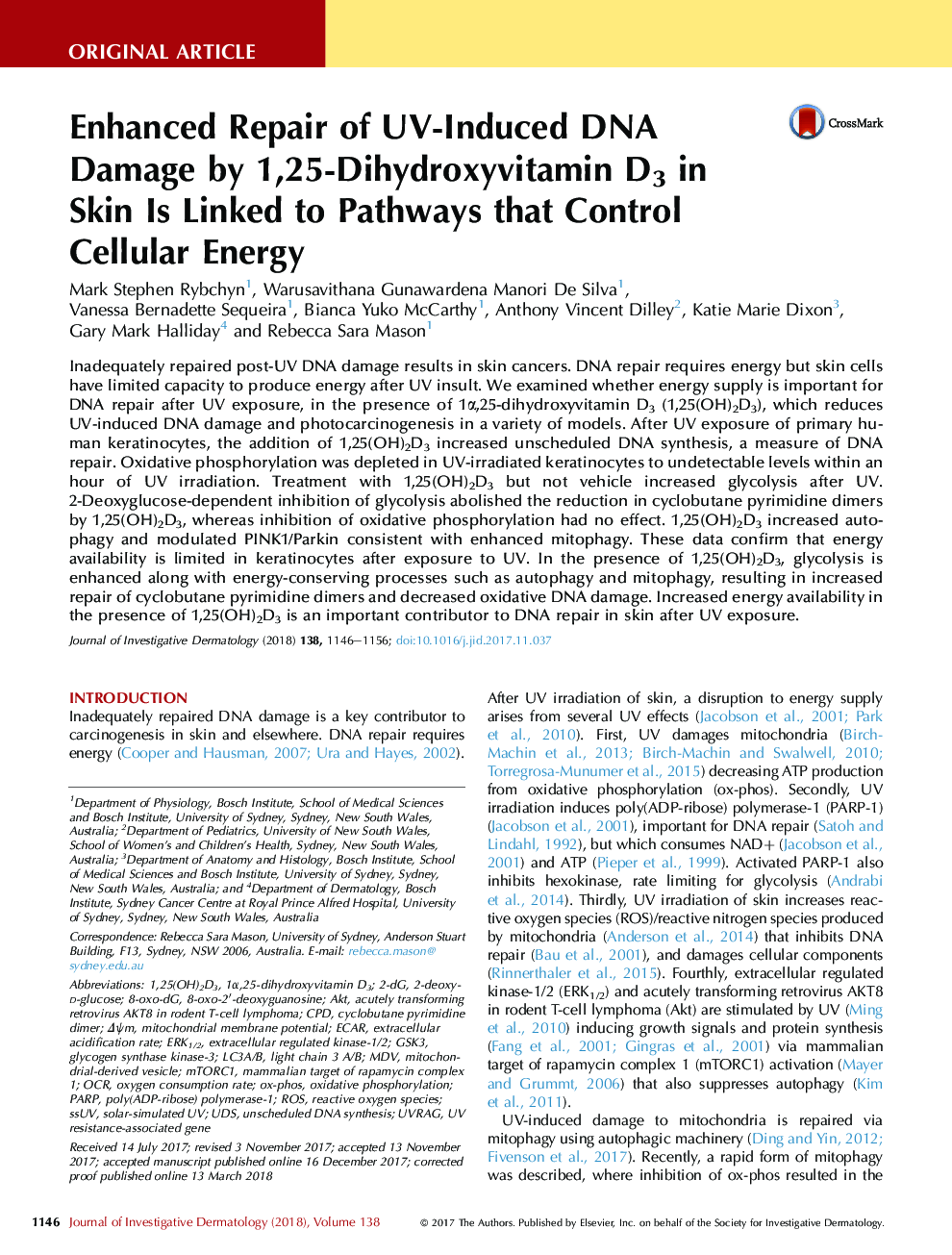| Article ID | Journal | Published Year | Pages | File Type |
|---|---|---|---|---|
| 8715940 | Journal of Investigative Dermatology | 2018 | 11 Pages |
Abstract
Inadequately repaired post-UV DNA damage results in skin cancers. DNA repair requires energy but skin cells have limited capacity to produce energy after UV insult. We examined whether energy supply is important for DNA repair after UV exposure, in the presence of 1α,25-dihydroxyvitamin D3 (1,25(OH)2D3), which reduces UV-induced DNA damage and photocarcinogenesis in a variety of models. After UV exposure of primary human keratinocytes, the addition of 1,25(OH)2D3 increased unscheduled DNA synthesis, a measure of DNA repair. Oxidative phosphorylation was depleted in UV-irradiated keratinocytes to undetectable levels within an hour of UV irradiation. Treatment with 1,25(OH)2D3 but not vehicle increased glycolysis after UV. 2-Deoxyglucose-dependent inhibition of glycolysis abolished the reduction in cyclobutane pyrimidine dimers by 1,25(OH)2D3, whereas inhibition of oxidative phosphorylation had no effect. 1,25(OH)2D3 increased autophagy and modulated PINK1/Parkin consistent with enhanced mitophagy. These data confirm that energy availability is limited in keratinocytes after exposure to UV. In the presence of 1,25(OH)2D3, glycolysis is enhanced along with energy-conserving processes such as autophagy and mitophagy, resulting in increased repair of cyclobutane pyrimidine dimers and decreased oxidative DNA damage. Increased energy availability in the presence of 1,25(OH)2D3 is an important contributor to DNA repair in skin after UV exposure.
Keywords
ECARUDSmTORC1PARP8-oxo-dGOCRGSK3ΔΨm2-deoxy-d-glucoseacutely transforming retrovirus AKT8 in rodent T-cell lymphomaMDVUVRAG1α,25-dihydroxyvitamin D31,25(OH)2D32-DG8-oxo-2′-deoxyguanosinecpdERK1/2ROSAktcyclobutane pyrimidine dimerUnscheduled DNA synthesisOxidative phosphorylationOxygen consumption rateextracellular acidification rateMammalian target of rapamycin complex 1Mitochondrial membrane potentialPoly(ADP-ribose) polymerase-1glycogen synthase kinase-3Reactive oxygen species
Related Topics
Health Sciences
Medicine and Dentistry
Dermatology
Authors
Mark Stephen Rybchyn, Warusavithana Gunawardena Manori De Silva, Vanessa Bernadette Sequeira, Bianca Yuko McCarthy, Anthony Vincent Dilley, Katie Marie Dixon, Gary Mark Halliday, Rebecca Sara Mason,
